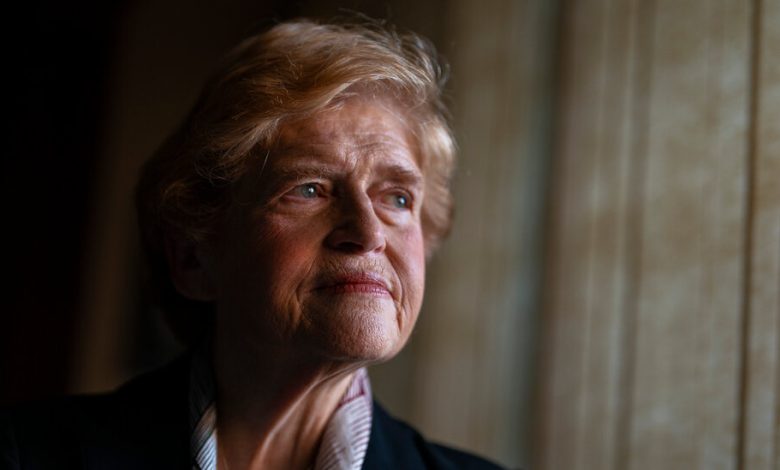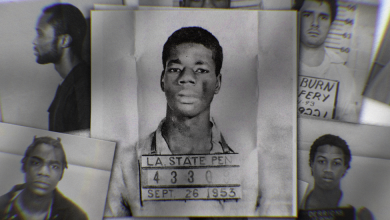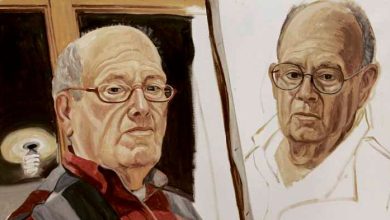The Hate That Doesn’t Know Its Own Name

When the historian Deborah Lipstadt defeated a libel suit brought against her in a British court by the Holocaust denier David Irving in April 2000, it was almost possible to imagine that antisemitism might someday become a thing of the past, at least in much of the West. Taking a trip to Israel was not an ideologically fraught choice. Wearing a Star of David was not a personally risky one. College campuses did not feel hostile to Jewish students. Synagogues (at least in the United States) did not have police officers stationed outside their doors.
Not anymore.
The Anti-Defamation League recorded 751 antisemitic incidents in the United States in 2013. There were 3,697 in 2022. There was a nearly 400 percent increase in the two weeks after the Hamas massacre of Oct. 7 compared with the year before. Last week, “Jewish students specifically were warned not to enter M.I.T.’s front entrance due to a risk to their physical safety,” according to a public letter from Jewish students there. In Montreal a Jewish school was targeted by gunfire twice in a single week.
Today, Lipstadt is the U.S. special envoy to monitor and combat antisemitism, and her battle against Irving (the subject of the 2016 film “Denial”) seems almost quaint. “I never imagined antisemitism would get this bad,” she told me when I spoke with her by phone on Monday evening. “Something about this is different from anything I have ever personally seen.”
One of those differences, I suggested, is that antisemitism is the hate that doesn’t know its own name — that is, that many of those who call themselves anti-Zionists or chant “From the river to the sea, Palestine will be free” would vehemently deny that they are engaged in antisemitic behavior.
Lipstadt allowed that at least a few people have no idea what the chant means. But many more do: a call for “a purely Palestinian state without Jews.” She added, “You may want to redefine it, but what it has stood for, for decades, is quite clear.” (Yes, there are those who imagine Jews and Palestinians coexisting harmoniously in some future river-to-sea Palestine. Hamas murdered that fantasy, along with so much else, on Oct. 7.)
As for anti-Zionism (never to be confused with ordinary, even stringent, criticism of Israeli policy), “we have to make a historical distinction,” she said. A century ago, before the creation of the state of Israel, questions about Zionism were “more of a political or intellectual debate. But when you are talking about a state with 7.1 million Jews and when you are saying they have no right to exist and should all go someplace else, that’s something far more than an ideological point.”
What about more specific anti-Zionist arguments, such as the view that the Jews displaced native inhabitants to create Israel? Or that Israel is a racist state that practices apartheid?
Lipstadt made short work of those claims. If Israel ought to be abolished because it is guilty of displacing native inhabitants, then the same should go for the United States or Australia, among many other countries. If Israel is racist, then how is it that more than half of Israeli Jews have non-Ashkenazi roots, because their ancestors came from places like Iran, Yemen and Ethiopia? If Israel is an apartheid state, why are Israeli Arabs in the Knesset, on the Supreme Court, attending Israeli universities, staffing Israeli hospitals?
Then there is the double standard that’s so often applied to Jews. On college campuses, she noted, “when other groups say, ‘We are a victim,’ the default position is to believe them. When Jews say it, the default position is to question, to challenge, to say, ‘You caused it’ or ‘You don’t have a right to that’ or ‘What you say happened to you is not really an example of bigotry.’”
Why is so much of today’s antisemitism coming from well-educated people, the sort who would never be caught dead uttering other racist remarks? Lipstadt recalled that of the four Einsatzgruppen — the German death squads entrusted with the mass murder of Jews in World War II — three were led by officers with doctoral degrees. “You can be a Ph.D. and an S.O.B. at the same time,” she said.
She also pointed to academic fads of the past two decades, “narratives or ideologies that may not start out as antisemitic but end up painting the Jew as other, as a source of oppression instead of having been oppressed.” One of those narratives is that Jews are “more powerful, richer, smarter, maliciously so,” than others and must therefore be stopped by any means necessary.
The idea that opposing Jewish power can be a matter of punching up, rather than down, fits neatly into the narrative that justifies any form of opposition to those with power and privilege, both of them dirty words on today’s campuses. It’s how Hamas’s “resistance” — the mass murder and kidnapping of defenseless civilians — has become the new radical chic.
The challenge that Lipstadt confronts isn’t confined to campuses. It’s worldwide: the streets of London (which saw a 1,350 percent increase in antisemitic hate crimes in the early weeks of October from the previous year) and on Chinese state media (which hosts discussion pages about Jewish control of American wealth) and in Muslim immigrant communities throughout Europe (with Muslims handing out candy in one Berlin neighborhood to celebrate the Oct. 7 attacks).
Lipstadt was clear about where this leads: “Never has a society tolerated overt expressions of antisemitism and remained a democratic society.” What to do? Governments alone, she said, can’t solve the problem.
“I know it sounds ludicrous, but a lot comes down to what happens at the dinner table.” She told me of a friend whose fifth-grade daughter was taunted by antisemitic remarks by her classmates at a “fancy Washington school.”
“Where did they get that? Where did it come from? How did they learn it was OK?”
The Times is committed to publishing a diversity of letters to the editor. We’d like to hear what you think about this or any of our articles. Here are some tips. And here’s our email: [email protected].
Follow The New York Times Opinion section on Facebook, Twitter (@NYTopinion) and Instagram.





